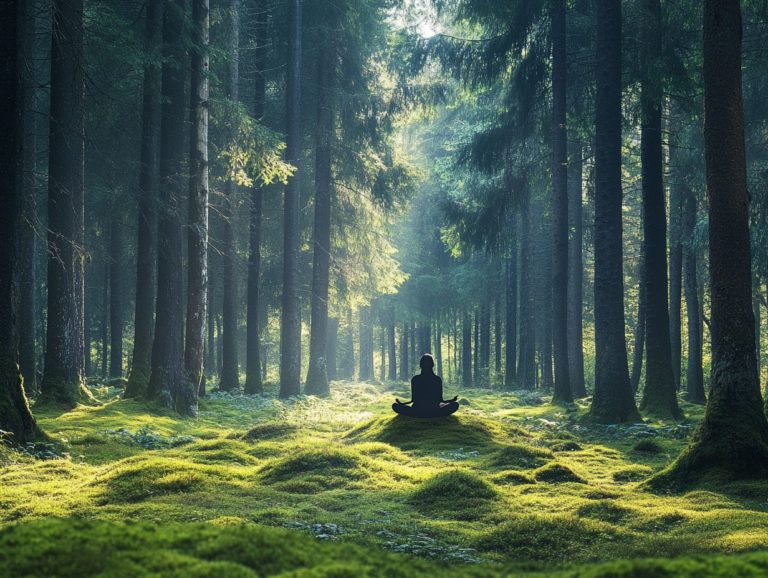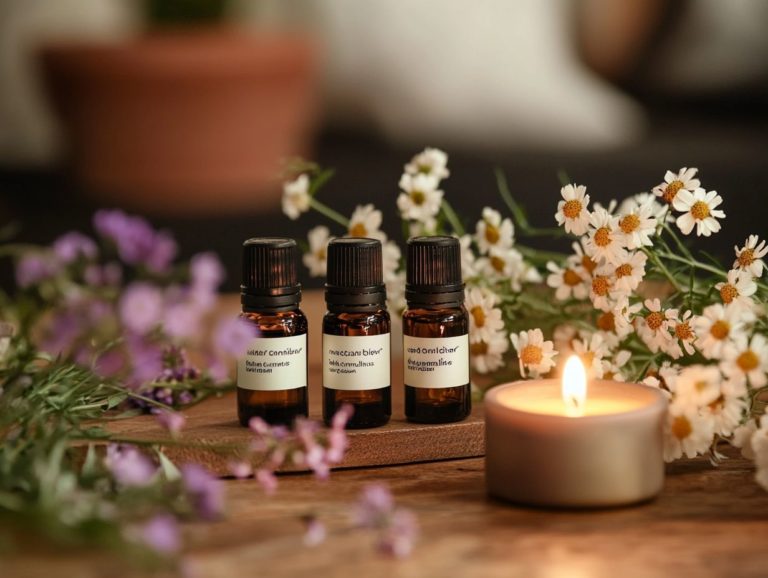Yoga Poses for Anxiety Relief
Feeling overwhelmed by anxiety? You re certainly not alone, and here s the silver lining: yoga can serve as a powerful ally in your quest for peace and balance.
Let s explore ten yoga poses that can help you feel calmer and more balanced. From the calming embrace of Child’s Pose to the restorative benefits of Legs-Up-the-Wall Pose, each practice is crafted to ground you and promote deep relaxation.
Discover how you can seamlessly weave yoga into your daily routine for lasting relief. Uncover the transformative potential these poses hold for your mental well-being!
Contents
- Key Takeaways:
- 1. Balasana (Child’s Pose)
- 2. Uttanasana (Standing Forward Bend)
- 3. Adho Mukha Svanasana (Downward-Facing Dog)
- 4. Setu Bandhasana (Bridge Pose)
- 5. Viparita Karani (Legs-Up-the-Wall Pose)
- 6. Baddha Konasana (Bound Angle Pose)
- 7. Sukhasana (Easy Pose)
- 8. Savasana (Corpse Pose)
- 9. Pranayama (Breathing Exercises)
- 10. Chanting or Mantra Meditation
- How Does Yoga Help with Anxiety?
- What Are the Other Benefits of Yoga for Mental Health?
- What Are the Best Times to Practice Yoga for Anxiety Relief?
- Can Yoga Be Used as a Standalone Treatment for Anxiety?
- What Precautions Should Be Taken When Practicing Yoga for Anxiety?
- How Can Yoga Be Incorporated into a Daily Routine for Anxiety Relief?
- Frequently Asked Questions
- What are the best yoga poses for anxiety relief and emotional healing?
- How can yoga poses help with anxiety relief?
- Can anyone do yoga poses for anxiety relief?
- How often should I do yoga poses for anxiety relief?
- Are there any breathing techniques that can be used with yoga poses for anxiety relief?
- Are there any precautions I should take when doing yoga poses for anxiety relief?
Key Takeaways:
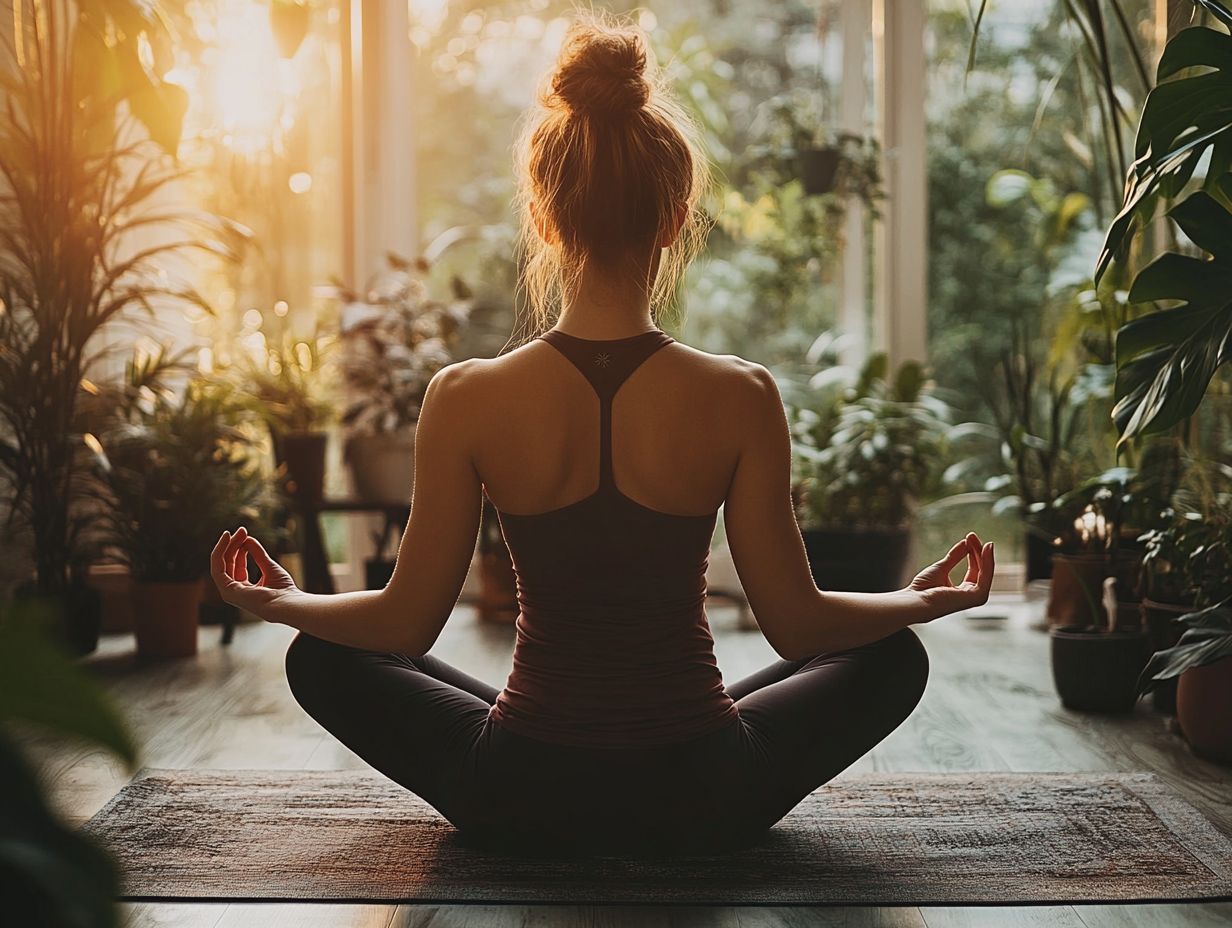
- Practicing yoga poses such as Balasana, Uttanasana, and Adho Mukha Svanasana can help relieve anxiety by promoting relaxation and reducing stress levels.
- Regular yoga practice can also improve overall mental health and well-being.
- Incorporating breathing exercises, chanting, and mantra meditation into your daily yoga routine can enhance the benefits of yoga for anxiety relief.
1. Balasana (Child’s Pose)
Balasana, or Child’s Pose, is a restorative yoga posture designed to promote deep breathing and relaxation. This enables a profound connection between your mind and body, significantly easing symptoms of anxiety and stress.
As you settle into the pose, your body finds a sense of calm while your mind gently quiets the chatter that often accompanies negative thoughts and muscle tension.
This gentle pose enhances your body awareness, allowing you to tune into your physical sensations and fostering a deep sense of mindfulness. It stretches your spine and shoulders, relieving tension that accumulates in those areas, and offers a safe space for emotional healing.
Practicing Balasana in harmony with your breath amplifies relaxation and promotes emotional stability by encouraging introspection and grounding. With each deepening breath, you ll find it easier to release anxiety, creating room for tranquility and clarity within, ultimately cultivating a holistic sense of well-being.
2. Uttanasana (Standing Forward Bend)
Uttanasana, or Standing Forward Bend, invites you to engage in physical activity while triggering a relaxation response that effectively reduces muscle tension and stress levels.
This posture allows you to forge a deeper connection with your body and mind, enhancing your ability to sense your internal body state and self-regulate.
As you stretch your spine and hamstrings, you not only improve your physical flexibility but also foster emotional balance. With your body bending forward, the gentle inversion helps calm your nervous system, providing you a sense of grounding.
Incorporating mindful breathing during Uttanasana elevates the relaxation experience. You may discover that with each exhale, your worries begin to fade away, cultivating a serene state of mind that builds resilience against daily stressors.
3. Adho Mukha Svanasana (Downward-Facing Dog)
Adho Mukha Svanasana, or Downward-Facing Dog, serves as a cornerstone in your yoga practice, engaging a multitude of muscle groups while promoting a serene sense of stability in both body and mind.
This pose presents a physical challenge and invites you to incorporate breathing exercises to calm your mind, enhancing the crucial mind-body connection that aids in managing anxiety.
Practicing Downward-Facing Dog regularly strengthens your arms, legs, and core, leading to improved posture and increased flexibility. By elongating your spine and opening your hips, this position alleviates tension and discomfort that often accompany daily movements.
This pose also encourages you to cultivate mindfulness and self-compassion. As you hold the posture, you are gently reminded to listen to your body, honoring its limits and embracing each breath as a pathway to emotional grounding. This nurturing approach fosters emotional resilience, enabling you to navigate life s challenges with grace and ease.
Start practicing these poses today to reclaim your peace of mind!
4. Setu Bandhasana (Bridge Pose)
Setu Bandhasana, or Bridge Pose, is a transformative yoga posture. It strengthens your back and glutes while inviting relaxation techniques for emotional healing.
By opening your chest and encouraging deep breathing, this pose can help regulate your heart rate and foster a sense of calm amidst the challenges of chronic anxiety.
Beyond its emotional benefits, this gentle practice enhances your awareness of your body’s sensations, allowing you to increase your understanding of your mental state.
As you maintain the pose, you ll likely experience relief from muscle tension, especially in your shoulders and lower back, which can lead to improved posture. The synergy of physical alignment and emotional grounding makes Setu Bandhasana an essential part of any holistic wellness routine, ultimately contributing to better mental health and a profound sense of well-being.
5. Viparita Karani (Legs-Up-the-Wall Pose)
Viparita Karani, or Legs-Up-the-Wall Pose, invites you into a realm of calm, utilizing the strength of gravity to gently stretch your legs and lower back. This restorative posture encourages a relaxation response, allowing you to breathe deeply while enhancing your body awareness.
It’s an exceptional tool for managing anxiety, providing a sanctuary of stillness that cultivates a profound sense of tranquility.
As you immerse yourself in this pose, you ll experience the benefits of the inversion effect, promoting blood flow back to the heart. This not only alleviates physical tension but also soothes your nervous system, leading to a notable decrease in emotional reactivity.
Spend just a few minutes each day practicing this pose. It fits easily into your routine, offering a quick escape from the overwhelming feelings life can sometimes throw your way.
For many, Viparita Karani transcends being just a pose; it serves as a gateway to mindfulness and emotional stability.
6. Baddha Konasana (Bound Angle Pose)
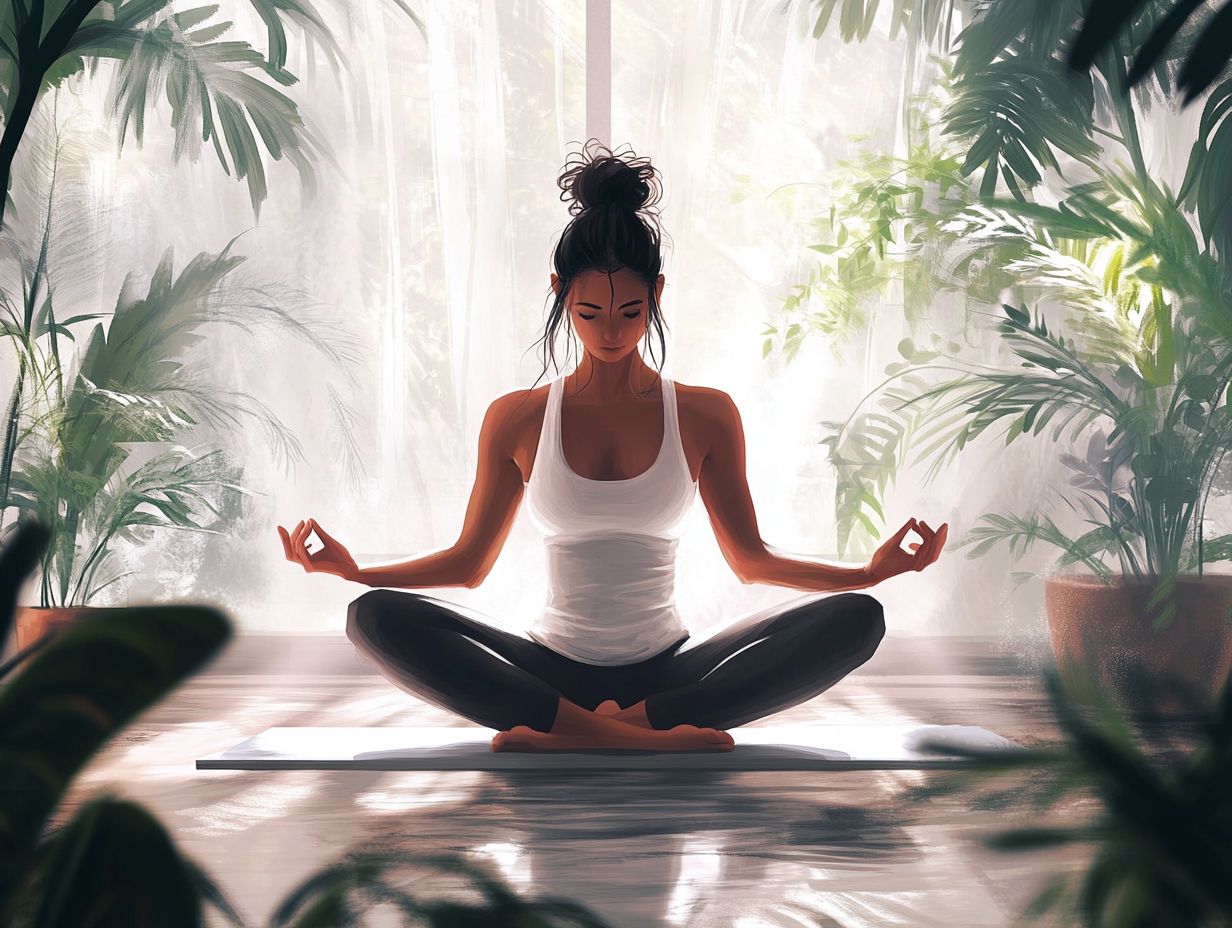
Baddha Konasana, or Bound Angle Pose, offers you a nurturing seated experience that elevates your body awareness and fosters emotional healing. Embrace stillness and breathe deeply. This pose helps you connect with your inner self, nurturing self-compassion while diminishing the hold of negative thoughts and muscle tension.
As you focus on your hips and groin, you’ll find that it effectively releases stored tension, which can be especially advantageous if you re navigating feelings of anxiety. By gently opening your body, you cultivate a mindful practice that encourages relaxation, allowing anxiety to gracefully dissipate.
The steady rhythm of your breath and the calming essence of this pose not only ground your mind but also contribute to emotional stability, creating a soothing sanctuary amidst life s challenges.
Incorporating Baddha Konasana into your regular routine can significantly enhance your mental well-being, helping you establish a resilient mindset and a more tranquil emotional landscape. Start practicing this pose today to experience its benefits!
7. Sukhasana (Easy Pose)
Sukhasana, or Easy Pose, offers you an accessible entry into mindfulness meditation, allowing you to embrace calmness and deepen your body awareness. This simple yet profound position fosters a connection between your mind and body, promoting relaxation and alleviating stress through focused breathing techniques.
By sitting comfortably with an upright spine, you create a solid foundation for deep introspection. Integrating intentional breath patterns helps ground your thoughts, enhancing your ability to regulate emotions.
As you regularly practice Sukhasana, you’ll likely find yourself better equipped to manage anxiety. The gentle openness of the pose creates an environment of acceptance, where you can observe your thoughts without feeling the need to react immediately.
Ultimately, this experience transcends mere physical posture; it’s a holistic journey that nurtures tranquility, enabling you to cultivate a resilient mindset in the face of life’s uncertainties. Try this practice today!
8. Savasana (Corpse Pose)
Savasana, or Corpse Pose, is an essential relaxation technique in yoga that invites you into a realm of stillness, offering both emotional support and profound relaxation. As you focus on your deep breathing, this pose becomes a sanctuary for releasing accumulated stress and nurturing a quiet mind.
It acts as a crucial counterbalance to the more dynamic poses you typically practice, like sun salutations or warrior sequences. In today s fast-paced world, where anxiety often takes the spotlight, incorporating this restorative pose can do wonders to calm your nervous system, helping you regain your balance after physically demanding postures.
As you lie down in this restorative position, take a moment to truly savor it, allowing the benefits of your practice to crystallize. This intentional pause not only enhances your mental clarity but also deepens your connection to your inner self, making Savasana an essential ally for anyone seeking to manage anxiety effectively.
9. Pranayama (Breathing Exercises)
Pranayama, or breathing exercises, serve as a vital element of your yoga practice, enabling you to harness your breath as a powerful tool for managing anxiety and facilitating emotional healing. By engaging the vagus nerve with intentional breathing techniques, you can significantly diminish anxiety and cultivate a profound sense of calm and emotional stability.
Various pranayama techniques, such as Nadi Shodhana (alternate nostril breathing) and Ujjayi (victorious breath), work to regulate your nervous system by enhancing parasympathetic activity, the part of the nervous system that helps you relax. These methods are not just traditional practices; they have been backed by a wealth of research showcasing their effectiveness in alleviating stress and anxiety symptoms.
For example, a study published in the Journal of Clinical Psychology revealed that participants who incorporated pranayama into their routine experienced notable reductions in anxiety levels and improvements in mood. As these breathing exercises foster self-regulation and heighten your awareness of bodily sensations, they enable you to connect with your internal states, ultimately promoting emotional resilience and enhancing your overall well-being.
Don t miss out on the chance to experience this! By engaging in pranayama, you set the stage for a calmer, more balanced life.
10. Chanting or Mantra Meditation
Chanting or mantra meditation is an extraordinary yoga practice that merges sound with mindfulness, nurturing emotional healing and fortifying your resilience against negative thoughts and emotional reactions. This practice invites a deep focus and connection, enriching your overall yoga journey by fostering self-compassion and cultivating stillness in the mind.
By weaving these rhythmic vocalizations into your yoga sessions, you create a serene atmosphere that naturally soothes the nervous system. As you engage in this meditative state, you may find yourself experiencing a profound shift in awareness, enabling you to release stress and emotional burdens.
Over time, this harmonious blend of chanting and movement not only heightens your sense of mindfulness but also acts as a form of emotional support. It enables you to navigate life s challenges with clarity and grace, ultimately guiding you toward a more balanced and harmonious existence.
How Does Yoga Help with Anxiety?
Yoga stands out as an exceptional practice for alleviating anxiety, enhancing mental health, and fostering emotional healing. Through a harmonious blend of postures, breathing techniques, and mindfulness, it cultivates a profound mind-body connection. This connection equips you with invaluable tools for self-regulation and emotional support, significantly alleviating symptoms of stress and anxiety disorders.
Research highlights that yoga positively influences the autonomic nervous system, transitioning it from a state of heightened arousal often associated with anxiety to one characterized by relaxation and tranquility. This change comes from the deep, conscious breathing you practice in yoga, which activates the parasympathetic nervous system.
The mindfulness aspect of yoga encourages you to focus on the present moment, effectively diminishing the ruminative thoughts that often exacerbate anxiety. Studies, including those featured in the Journal of Clinical Psychology, underscore that regular engagement in yoga can yield lasting improvements in anxiety levels, showcasing its effectiveness as a complementary approach to conventional therapies.
What Are the Other Benefits of Yoga for Mental Health?
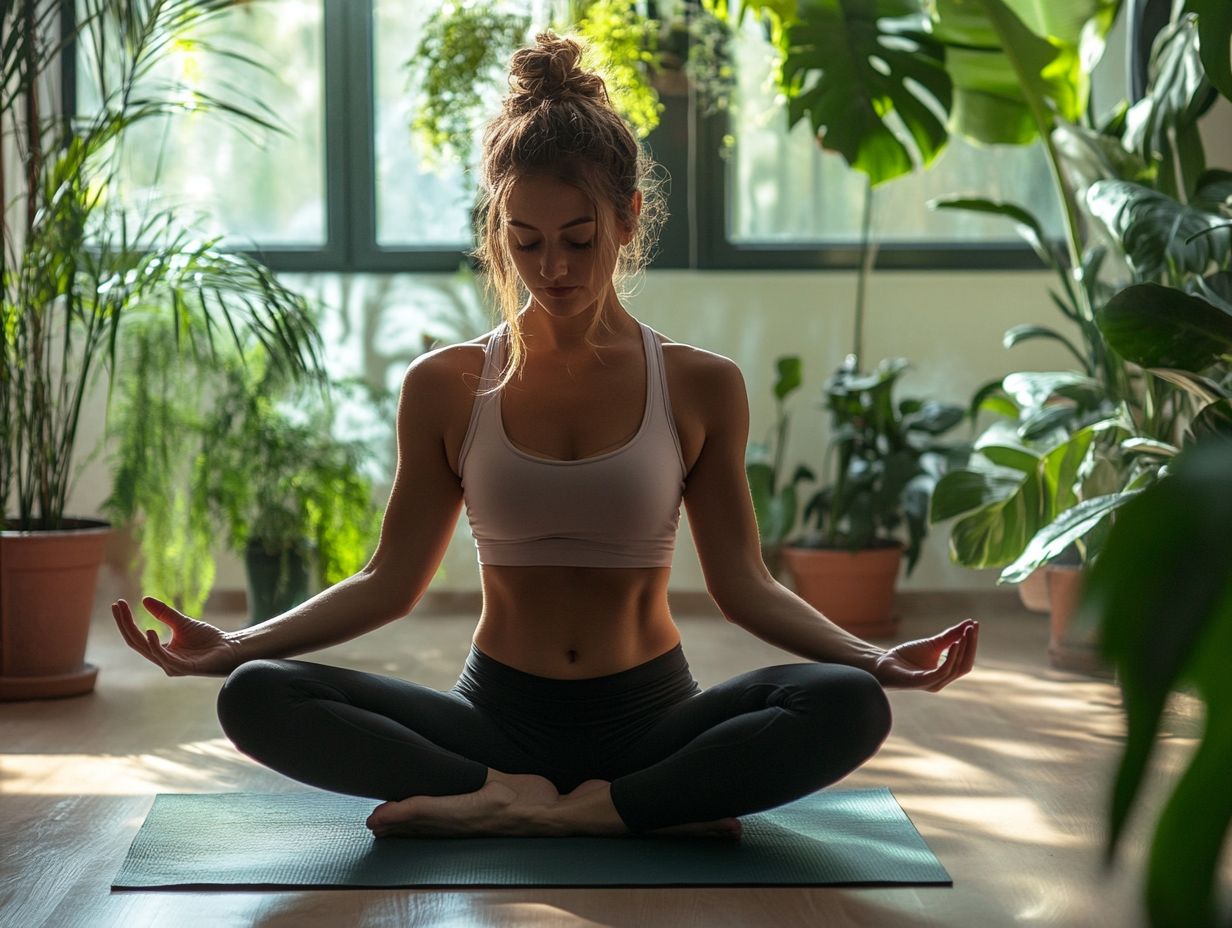
Beyond merely alleviating anxiety, yoga offers a wealth of benefits for your mental health, including enhanced emotional healing, improved body awareness, and effective stress relief.
Engaging in yoga encourages a holistic approach to well-being. It nurtures self-compassion and builds resilience to navigate the daily challenges life presents.
As you incorporate regular practice into your routine, you may notice improved focus and a significant reduction in emotional reactivity. Research supports this, highlighting that mindful movements and breathing techniques can enhance your attention span and cognitive function. A study published in the journal *Psychological Reports* found that yoga practitioners reported feeling less irritable and more emotionally stable.
By cultivating a deeper connection with your body, you often discover an overall enhanced sense of well-being and a more positive outlook on life. This, in turn, contributes to your mental fortitude and emotional balance.
What Are the Best Times to Practice Yoga for Anxiety Relief?
Identifying the best times for you to practice yoga can significantly enhance its effectiveness in relieving anxiety, allowing you to seamlessly integrate this physical activity into your daily routine for optimal benefits.
Morning sessions can invigorate your body and promote mindfulness, while evening practices often provide a soothing release after a long day.
By establishing a routine that incorporates yoga, you can tailor your practice to meet your personal needs, whether it’s shaking off a sluggish morning or alleviating the stress that has accumulated throughout the day. Morning yoga helps awaken both your body and mind, setting a positive tone for your entire day.
Conversely, evening sessions offer a gentle wind-down, enabling your mind to shed tension and fostering a peaceful transition into rest.
The long-term benefits of these consistent practices can greatly influence your anxiety management, encouraging a balanced emotional state and enhancing your resilience against daily stressors.
Can Yoga Be Used as a Standalone Treatment for Anxiety?
While yoga can be an effective complementary approach for managing anxiety, you should carefully consider its use as a standalone treatment option based on your individual needs and circumstances.
Research studies suggest that yoga can significantly reduce anxiety symptoms, but it often yields the best results when integrated with traditional treatment methods.
If you have generalized anxiety disorder or stress-related conditions, the calming techniques in yoga like deep breathing and mindfulness can help you find inner peace.
It s crucial for you to consult healthcare professionals who can help tailor a plan specifically suited to your mental health needs.
By involving practitioners in your journey, you can effectively navigate which type of yoga practice aligns with your personal circumstances, taking into account factors such as the severity of anxiety, your physical fitness level, and any other existing treatments. This thoughtful approach can pave the way for a more holistic recovery.
What Precautions Should Be Taken When Practicing Yoga for Anxiety?
Practicing yoga to alleviate anxiety demands a few important precautions to ensure a safe and effective experience, especially if you have heightened anxiety levels or specific health concerns.
It s vital to choose gentle practices and seek guidance from qualified instructors who can offer both emotional support and personalized modifications for the postures.
Creating a serene, clutter-free environment can significantly enhance your practice, allowing you to forge a deeper mental connection and truly relax. You should pace yourself, tuning into your body s signals to avoid any strain or discomfort during your sessions.
Engaging in restorative poses, rather than those that are overly strenuous, can help cultivate a sense of safety and comfort.
Remember, your goal is to cultivate peace and mindfulness. Listen to your body, honor your limits, and enjoy your journey toward anxiety relief!
How Can Yoga Be Incorporated into a Daily Routine for Anxiety Relief?
Incorporating yoga into your daily routine for anxiety relief can be a transformative experience. It offers essential physical movement and mindfulness that elevate your overall well-being. Simple strategies, like dedicating just a few minutes each day to mindful breathing or specific yoga poses, can significantly influence your stress levels and emotional health over time.
To make this practice more accessible, consider setting aside specific times each day for your yoga sessions whether it s early in the morning or right before bed. You might find that integrating short sessions throughout the day is beneficial. Even a quick five-minute stretch during work breaks can promote relaxation.
Utilizing yoga apps or online classes allows you to follow guided sessions that cater to any skill level, making it easier to stay committed. By embracing consistency in these practices, you can gradually experience profound benefits such as reduced anxiety and improved emotional resilience. This will ultimately foster a healthier relationship with everyday stressors.
Watch this video to learn about yoga techniques that help with anxiety relief.
Frequently Asked Questions
What are the best yoga poses for anxiety relief and emotional healing?
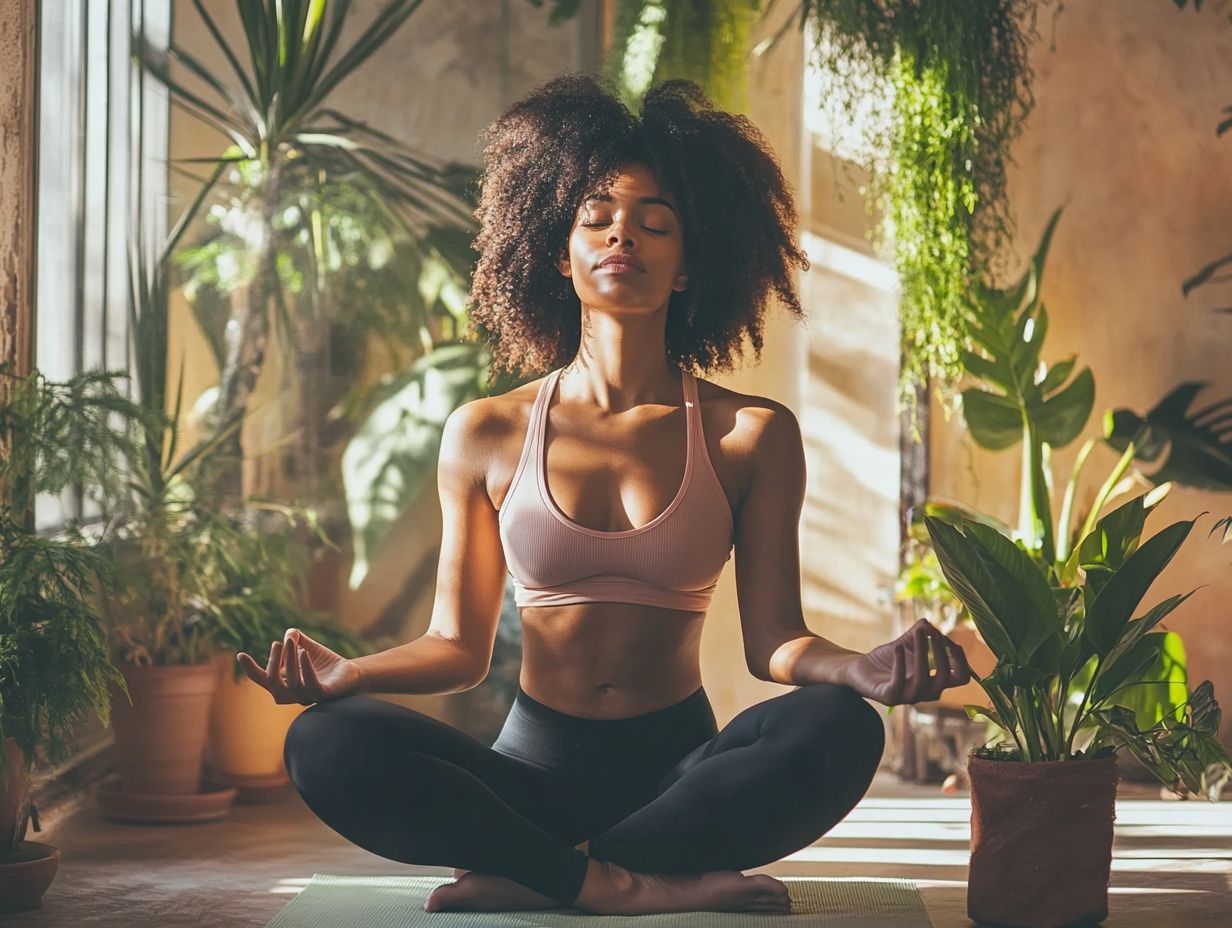
Some of the best yoga poses for anxiety relief include child’s pose, downward facing dog, and legs up the wall pose. Restorative yoga and standing poses can also be very effective.
How can yoga poses help with anxiety relief?
Yoga poses can help with anxiety relief by promoting relaxation, reducing stress hormones, and increasing feelings of calmness through mindful body awareness.
Can anyone do yoga poses for anxiety relief?
Yes, anyone can practice yoga poses for anxiety relief and mental health support. They can be modified to suit various levels of physical ability and can be done anywhere at any time.
How often should I do yoga poses for anxiety relief?
It is recommended to practice yoga poses for anxiety relief at least three times a week for maximum benefits. However, even doing them once a week can still be beneficial for managing chronic anxiety.
Are there any breathing techniques that can be used with yoga poses for anxiety relief?
Yes, deep belly breathing practices can be used with yoga poses to promote relaxation and reduce stress, enhancing the mind-body connection.
Are there any precautions I should take when doing yoga poses for anxiety relief?
If you have existing medical conditions or injuries, consult a doctor before starting any new exercise routine, especially for anxiety management. Listening to your body is important; avoid pushing yourself too hard in the poses to prevent muscle tension.
Start your journey to tranquility today! By incorporating yoga into your daily routine, you can experience significant improvements in your mental health and overall well-being.


